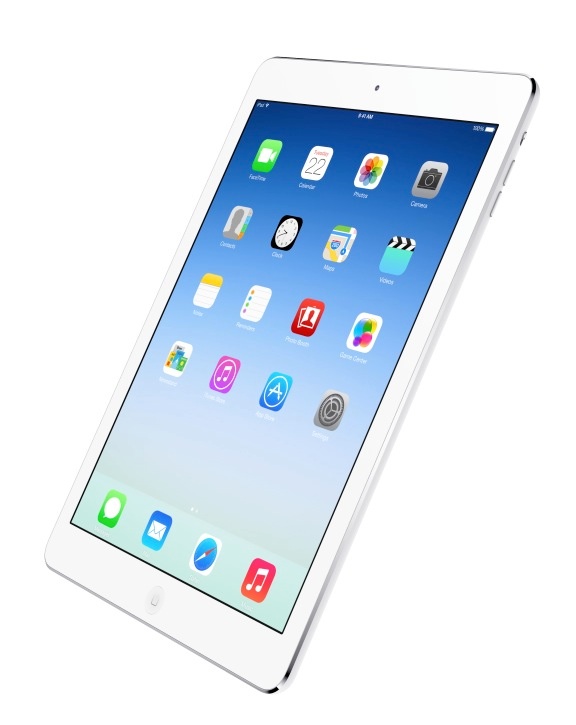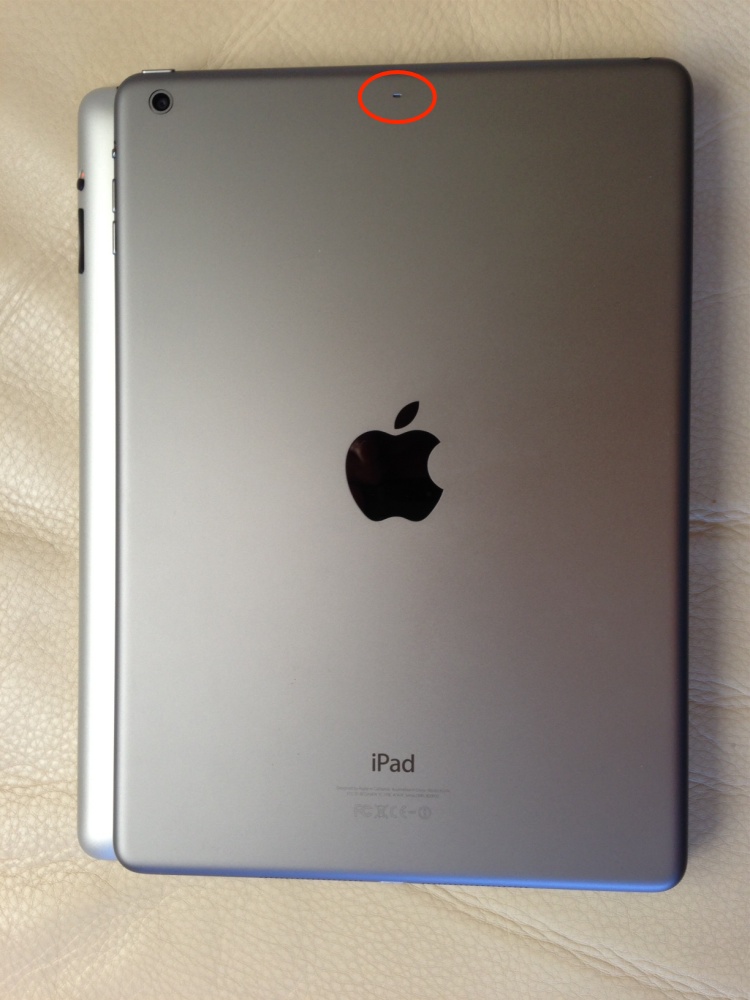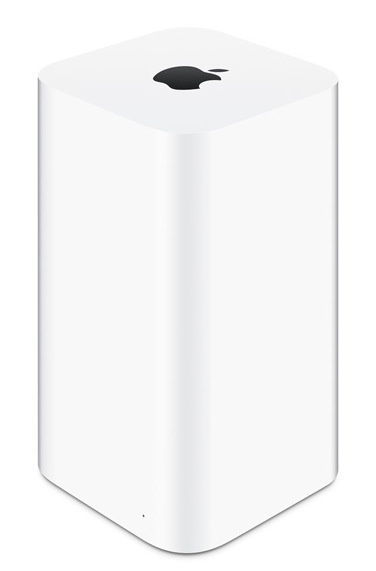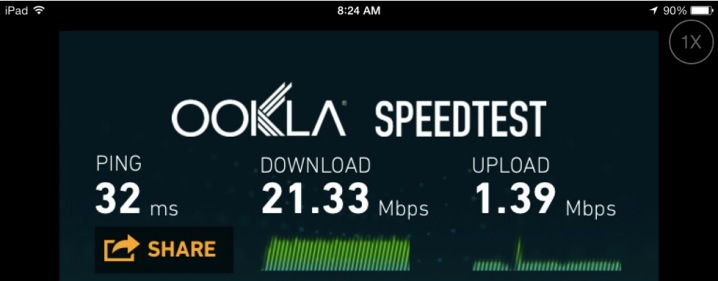Resetting the standard.

Background:
A while back I sold my first generation iPad Mini and replaced it with Google’s second generation Nexus7. That was a sound move. A far better display, faster operation and a robust Android 4.3 OS and a much handier 16:9 display format all make for a fine user experience. The openness of Android makes it easy to connect to other devices, not least additional storage of as much capacity as you want, making it unnecessary to pay up for more overpriced internal memory.
The new iPad Air offers no such option. The storage it comes with is what you get. Everything else must come from the Cloud, assuming you have a decent wi-fi connection. But, this minor complaint aside, the iPad Air resets the standard for what a tablet should be, starting at just $500.
The new iPad Mini with retina display:
By contrast, the latest iPad Mini now with an HD display, is hugely overpriced, starting at $400, just $100 less than the 16gB iPad Air which offers a larger display for little added weight. With the Nexus7 selling for just $229, it’s impossible to recommend the new iPad Mini, especially as accessing and syncing with the Apple ecosystem is so easy with Android. Refer to my series of Nexus7 articles here.
Pricing:
The pricing of the iPad Air remains unchanged from predecessors. $500 for the entry 16gB model with $100 extra for each doubling of storage up to 128gB, with an additional (and outrageous) $130 for cellular connectivity. I bought the 64gB model for $700, and use my iPhone5 when I need to get on wifi, via tethering.
First impressions of the iPad Air:
If the Nexus7 defines the pocket tablet genre, then the iPad Air does the same for the full size one. The immediate first impressions are, indeed, remarkable. Apple has managed to shave a significant amount of weight from the iPad Air, which comes in at just 16 ozs, a full 6 ounces less than its predecessor. It’s a reduction which is very noticeable. Further, the external dimensions have been reduced, owing to a smaller bezel, with the display remaining the same – and still too reflective. Despite the reduced thickness, the sound from the speakers has been noticeably improved (magic!) and the overall speed of operation – compared with my iPad 3 – is significantly better. Most importantly, iOS7 (awful fonts and all) now supports true multitasking. This advantage manifests itself best in the use of web based apps, such as the Financial Times which I read as part of my day job. The FT has sidestepped Apple’s AppStore monopoly, and the attendant punitive ‘take for the house’ of 30%, delivering its publication through a web app. With iOS6 and earlier, every re-entry to the app resulted in an agonizing wait as everything reloaded from scratch. Now it’s instantaneous. Very welcome.

The iPad Air atop the iPad3 – the noise canceling microphone orifice is circled.
Wi-fi and the new 2013 Airport Extreme:
Wi-fi speed, owing to improved antennas, is the best I have yet measured, some 10% faster than with iPad3 and as fast as my desktop machine, though some of that may be due to my replacement of an ancient single band, 5 years old, Airport Extreme with the latest version of the device. Except for the packaging which is designed to ensure you drop the contents when the bottom (literally) falls out once the glassine is removed, the new Airport Extreme is recommended with no reservations. Setup is a breeze – try saying that about any other router on the market. It also supports 802.11ac, which is available on the 2013 MacBook Air and in new MacBook Pros just coming to market.

The new Airport Extreme – highly recommended.
With both my 2013 MacBook Air and the new iPad Air I get download speeds greater than the maximum my broadband supplier, AT&T, states is possible. I am using 802.11ac on the MBA and 802.11n on the iPad Air, which does not support 802.11ac. AT&T’s stated maximum is 18mbs for my service level, yet I consistently get well over that:

The 2013 MBA with the 2013 AEX router.

The iPad Air with the 2013 AEX router.
Interestingly, the older 802.11n protocol delivers almost the same speed on the MBA, suggesting the gains are coming from the router antennas rather than from any new protocol advantages.
Issues:
What’s not to like? One of my most used apps on the iPad is GoodReader. The wired – and fastest – way of moving content to or from the iPad was by using GoodReaderUSB, a small desktop app which added a drag and drop interface for file transfer to/from your source computer (desktop, laptop, etc.) Sadly, GoodReaderUSB does not work with the iPadAir, so I have to revert to wifi transfer – much slower – as described in the link. Further, mp4 video files currently play sound only, no image. I would expect this to be fixed soon as GoodReader has an excellent history of technical fixes and the maker has promised a comprehensive update soon. Other than as noted, GoodReader continues to function perfectly and is highly recommended.
The look and feel of iOS7 is a step backwards. The fonts are far less legible to my eyes and the loss of skeumorphism in app icons means that icons are flat and boring, and harder to find with a quick eye scan. For all the complaining from nerds about the awfulness of skeu, I much prefer the look and feel of iOS6. I suspect regular humans mostly feel the same.
Conclusions:
Other than that, operation is just like with any iOS device. Start-up is very fast, iCloud makes populating the new tablet with favorite apps trivial and Mail works perfectly, with some nice UI enhancements. Apple is making the iWork suite in its iOS variant available free (you have to download it, as it does not come pre-installed) and my only interest here is Numbers, the spreadsheet. A spreadsheet stored at Dropbox can be loaded and if it is then saved in iCloud Apple claims that it’s truly interactive, meaning that changes on one device will be automatically reflected on any other device where the spreadsheet is open. For other desk- or laptops that means you have to be using the iCloud.com version of Numbers, not the local standalone version in your Applications folder. Further, the Numbers spreadsheet in iCloud must not be password protected as it will not load if it is. A pretty confusing mess. Numbers can load Excel spreadsheets and can also save (Export to) to the Excel file format. Whether an experienced Excel user can adapt to the rather clunky Numbers interface is a different issue and Numbers is not about to obsolete the industrial power and breadth of use enjoyed by Excel in the real business world. Yes, Numbers can ‘make pretty’ with its many charts and templates, but pretty never improved earnings per share.
Minor grumbles aside, the new iPad Air is highly recommended. The far slower operation of the iPad2, which continues in the line for $100 less, is very much to be avoided, unless you do not value your time. And the weight reduction in the iPad Air means there’s simply no going back to older technology.
The iPad Air is now a mature device, with little obvious need for improvement. Size is constrained by the finite tools afforded us humans (aka fingers) and while batteries will get lighter and chips faster, there is no impatience with speed as regards the Air. I can easily see a 3-4 year life for this device before replacement/upgrade is called for, which makes for a nasty dilemma for Apple. After the large weight reduction in the Air, what is left to do to divorce credit cards from wallets? But Apple should be congratlated on its rigorous appication of Japanese kaizen preinciples of continuous improvement.
The best technical review out there is from AnandTech and can be found here. Be sure to check the two videos which demonstrate how well the added noise canceling microphone removes background noise from sound recordings. Remarkable.
The future with wi-fi equipped cameras:
With more cameras now sporting wi-fi circuitry, I’m looking forward to trying something like the new Panasonic MFT GX7 with the iPad Air to see how practical a combination this makes. The current gestation of the web blogging app WordPress works very well on the iPad so photography blogging using just a tablet and a wi-fi capable camera should be possible.